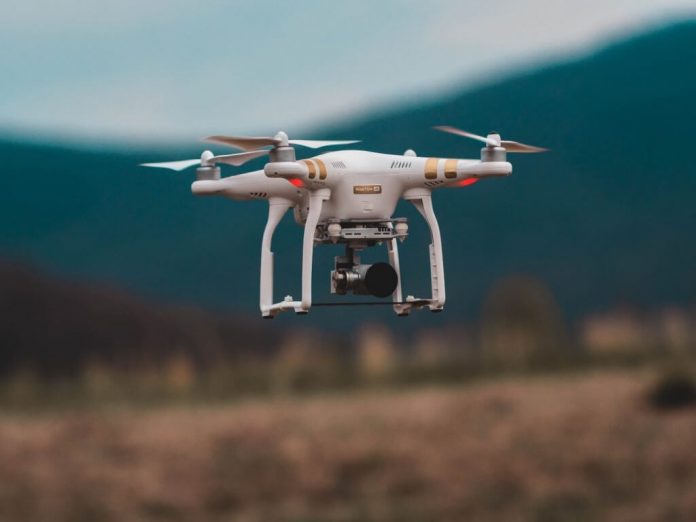This article is written by Vanya Verma from O.P. Jindal Global University. This article answers whether it is legal to fly drones in India and laws governing drone flying.
It has been published by Rachit Garg.
Table of Contents
Introduction
Drones, also known as Unmanned Aerial Vehicles (UAVs), are legal to operate in India. On August 26, 2021, India’s Ministry of Civil Aviation (MoCA) issued a new drone policy that formalized a draft regulation released earlier this summer. The government has chosen to remove the UAS Rules, 2021, and replace them with the liberalized Drone Rules, 2021, based on public feedback.
Recently the Civil Aviation Ministry has made huge changes to drone laws in the country. The government has passed Drone (Amendment) Rules, 2022 which states that remote pilot certificate (earlier it was called license) will not be required for flying small to medium size drones of up to 2kg for non-commercial purposes.
Drones are beneficial in a variety of industries, including transportation, agriculture, defense, law enforcement, surveillance, and emergency response, to name a few. Consumer interest has grown in recent years as demand for aerial photography and a wide range of business uses have increased in India’s B2B sector.
One can now operate a drone, but one must adhere to the criteria set forth by the Indian government, the Ministry of Civil Aviation (MoCA), and the DGCA. To fly a drone in India, certain norms and regulations must be adhered to, which will be further discussed in this article.
Permission to fly
Before knowing about the permissions required for flying drones one must be aware of the various drone categories segregated by the government. They are:
- Nano: Less than or equal to 250 grams.
- Micro: Greater than 250 grams and less than or equal to 2 kg.
- Small: Greater than 2 kg and less than or equal to 25 kg.
- Medium: Greater than 25 kg and less than or equal to 150 kg.
- Large: Greater than 150 kg.
Except in the nano category and micro category only for non-commercial use, all drone activities must be done only after receiving prior approval from the Digital Sky online platform for a flight or series of flights. The drone operator will also guarantee that the aircraft remains inside the stated area for which permission was granted, as well as provide an online log of each flight. For the nano and micro category the 2022 rules state that for flying and operating tiny drones one does not need a permit. Moreover, the government is carving out drone corridors to facilitate delivery of cargo deliveries.
Certificate to fly a drone
On an application filed by a manufacturer or importer of that type of drone on the digital sky platform, the Quality Council of India or a certification entity authorized by the Quality Council of India or the Central Government may issue a certificate of airworthiness for that type of drone if it meets the specified certification standards.
The Central Government may set the standards for getting a certificate of airworthiness for drones based on the Quality Council of India’s suggestion. These guidelines may encourage the adoption of Indian-made technology, designs, components, and drones, as well as India’s regional navigation satellite system, Navigation with Indian Constellation (NavIC).
Research and development entities no longer require a type certificate, a unique identification number, prior permission, or a remote pilot license for drone flying in India. Furthermore, under the new regulations type certification of drones will be completely undertaken by the Quality Council of India and other entities that have received authorisation from Quality Council of India.
Applicants can now apply for drone certification with just a single D-1 form which can be submitted through Digital Sky. Follow these steps:
- Fill in the name, contact details, and GSTIN on the form
- Details and supporting documents regarding the prototype drone
- Proof of fee payment
- Handing over the prototype drone to the certification body
Rule 12 of the Drone Rules lays down exemptions of drone certification. It says that no certificate of airworthiness shall be required for manufacturing, importing or operating:
- prototype drone for the purpose of research and development;
- prototype drone for obtaining certificate of airworthiness; and
- nano drone.
Remote pilot certificate to fly a drone
A remote pilot license means the permit issued by an authorized remote pilot training organisation to any natural person for operating a particular class or class of drones. However the amended rules substitute the word in the Drone Rules, 2021 with the word certificate.
A remote pilot license is valid for ten years and can be renewed for another ten years with each renewal application. The DGCA will issue a remote pilot license for a fee after receiving a certificate of training and a skill test report from an authorized training provider.
Previously, the government mandated that only after an individual gets trained from an authorized DGCA-approved drone training institute in India and registers themselves at Remote Pilot to get “Pilot Identification number” and Unmanned Aircraft Operator Permit (UAOP) will they be allowed to fly drones (except the nano models). But the recent rules state that individuals flying nano and micro drones (only for non-commercial purposes) do not require training.
The following natural persons are eligible for a remote pilot license:
- Must be at least eighteen years old and not more than sixty-five years old;
- Must have passed a recognised Board’s class tenth or equivalent examination; and
- Must have completed the training prescribed by the Director-General for the applicable class of remote pilot license from an authorized remote pilot training organization.
Although these are just the basic requirements of flying drones, the pilot also needs to understand the basics of flying like avionics, weather, wind speed, and other mechanics. With the advancement of technology drone flying is becoming more popular in every sector and each sector has specific requirements.
The duration of remote pilot license training depends on the type of drone one wants to operate but most training is short and lasts from five to seven days.
Drone flying restrictions in India
The restrictions of drones flying in India are stated below.
- A micro drone may not fly higher than 60 meters above ground level (AGL) or faster than 25 meters per second.
- A small drone may not fly higher than 120 meters above ground level or faster than 25 meters per second.
- Drones that are medium or large must fly in compliance with the conditions outlined in the DGCA’s Operator Permit.
- Prohibited zones are completely off-limits, whereas restricted areas require prior approval from the DGCA.
Area to fly a drone
According to the Civil Aviation Ministry, an interactive airspace map would be available on its website, showing the three zones:
- Yellow (controlled airspace).
- Green (no permission required).
- Red (flying not permitted).
Drone operators can use these zones to determine where they can and cannot fly their unmanned aircraft systems.
The yellow zone, which was previously a 45-kilometer radius around an airport perimeter, has been decreased to a 12-kilometer radius, indicating that drone operators no longer need permission to fly outside of a 12-kilometer radius around an airport perimeter.
Green zone is the airspace upto 400 feet that has not been designated as a red or yellow zone; and upto 200 feet above the area located between 8-12 km from the perimeter of an operational airport.
No-Fly zones in India (Red Zone)
Drones are not permitted to be flown in India in case of the following:
- Within 5 kilometers of the international airport perimeters in Mumbai, Delhi, Chennai, Kolkata, Bengaluru, and Hyderabad.
- Within a 3-kilometer radius of any civil, private, or defense airport’s boundaries.
- Within 25 kilometers of the international border (AGPL) that includes Line of Control (LoC), Line of Actual Control (LAC), and Actual Ground Position Line.
- Without clearance, within 3 kilometers of military installations/facilities.
- Within a 5-kilometer radius of Delhi’s Vijay Chowk.
- Unless clearance is acquired, within 2 km of the perimeter of strategic locations/vital installations notified by the Ministry of Home Affairs.
- In the State Capitals, within a 3-kilometer radius of the State Secretariat Complex.
- If the ground station is located on a fixed platform on land, it can be placed beyond 500 meters (horizontal) into the water from the coast.
- From a moving vehicle, a ship, or any other improvised floating platform.
- Without prior approval from the Ministry of Environment, Forests and Climate Change, over eco-sensitive zones around National Parks and Wildlife Sanctuaries.
- Within Prohibited, Restricted, and Danger zones, whether permanent or temporary.
Data security and drone pilots
Any data collected during a drone operation is the responsibility of the drone pilot. To securely keep or dispose of such data, one must follow appropriate protocols and have the necessary hardware. Furthermore, you must ensure that any data collected during operations is not shared with any third parties without the consent of the person to whom the data relates.
Cost of obtaining a drone remote pilot license
In India, the cost of obtaining a remote pilot license for drones has considerably decreased to nominal amounts. The cost structure has also been delinked from the drone’s size.
According to the new regulations, all types of drones must be registered for a fee of Rs 100. The drone remote pilot license will now be valid for ten years and can be renewed for another ten years with renewal application.
Indoor drone swarming and operations
Drone swarms and indoor operations are only permitted with drones in the Nano and Micro categories. Only approved regions and conditions approved by the DGCA are permitted for swarm operations. Drones in the small, medium and large categories should not be flown in enclosed spaces.
Penalty for non-compliance of the Drone Rules, 2021
After giving a person an opportunity to be heard, if the Director-General or an officer authorized by the Central Government, State Government, or Union Territory Administration is satisfied that a person has contravened or failed to comply with the provisions of these rules, he may levy a penalty not exceeding rupees one lakh in accordance with Section 10A of the Aircraft Act, 1934, for reasons to be recorded in writing.
After giving a person an opportunity to be heard, if the Director-General or an officer authorized by the Central Government, State Government, or Union Territory Administration is satisfied that a person has contravened or failed to comply with the provisions of these rules, he may cancel or suspend any license, certificate, authorisation, or approval granted under these rules.
Key amendments to the Drone (Amendment) Rules, 2022
On 11th February, 2022 the Ministry of Civil Aviation enacted and passed the Drone (Amendment) Rule, 2022. The key amendments to the previous rule are as follows:
- The remote pilot certificate will no longer be required for the micro category (only for non-commercial purposes) of drones.
- Under Rule 16 the registration of unmanned aircraft systems for the words, “within a period of thirty-one days falling after the said date” will be substituted with the words, “on or before the thirty-first day of March, 2022”.
- An individual owning any unmanned aircraft system manufactured in India or imported into India on or before 30th of November, 2021 must make an application to register and obtain a unique identification number and state the required details in form D-2 and the stipulated fee under Rule 46.
- Rule 34 which talks about procedure for obtaining a remote pilot license, sub-rule (4) has been omitted.
- The word “license” under the Rule has been substituted with the word “certificate” dealing with Remote Pilot Training Organization, Research, Development and Testing under the Rule.
- The amendment also modified Form D-1, D-2, D-3, D-4 and D-5.
Do’s and don’t to be kept in mind while flying drones in India
Do’s
- For operating in controlled airspace, obtain a Unique Identification Number (UIN) from the DGCA and attach it to your RPA.
- Only fly during daytime hours (after sunrise to before sunset)
- Fly in favorable weather: Good weather allows one to not only fly your RPA more efficiently but also to maintain track of it while it is in the air.
- Avoid airports and heliports at all costs.
- People’s privacy must be respected.
- Adhere to the flying guidelines.
Don’t
- Fly a Nano RPA no higher than 50 feet (15 meters) off the ground.
- Never fly a Micro RPA higher than 200 feet (60 meters) off the ground.
- Keep RPA at a distance of no more than 400 feet (120 meters) from the ground.
- Avoid flying RPA close to airports and heliports.
- Do not fly RPA over crowds of people, public events, or crowded stadiums without prior permission.
- To not fly RPA over or near any no-RPA zones or government facilities/military bases.
- Do not fly the RPA over private property without permission.
- Do not fly RPA in controlled airspace near airports without a flight plan or clearance from the AAI/ADC (at least 24 hours before actual operation).
- Do not drop or transport dangerous materials.
- Do not fly RPA if you are inebriated or under the influence of drugs or alcohol.
- Do not attempt to fly RPA from a moving vehicle, ship, or plane.
Conclusion
One should be careful of the regulations while flying the drone in India, though it is legal but not to mention the possibility of their malfunctioning and inflicting unintended harm to others, as a result, it is critical to govern their ownership and use.
References
- https://www.thequint.com/tech-and-auto/indias-new-drone-policy-2021-who-can-fly-drones-do-you-need-licence#read-more
- https://geoawesomeness.com/drone-flying-india-2021-rules-pilots/
- https://www.thenewsminute.com/article/flying-drones-now-legal-india-heres-all-you-need-know-92558
- https://www.loomsolar.com/blogs/collections/how-to-fly-a-drone-in-india
- https://www.dnaindia.com/india/report-independence-day-2021-drone-usage-guidelines-restrictions-and-no-fly-zones-across-india-2903915
- https://www.indiatoday.in/technology/features/story/drones-in-india-who-can-buy-them-what-are-usage-conditions-and-how-govt-is-controlling-drone-use-1820325-2021-06-28
- https://blog.flykit.app/drone-regulations-in-india-2021-updated/
Students of Lawsikho courses regularly produce writing assignments and work on practical exercises as a part of their coursework and develop themselves in real-life practical skills.
LawSikho has created a telegram group for exchanging legal knowledge, referrals, and various opportunities. You can click on this link and join:
Follow us on Instagram and subscribe to our YouTube channel for more amazing legal content.












